Product returns are a significant drain on eCommerce store profits. Reports put the return rate for online shops between 25% and 40%, depending on what you’re selling. After holiday periods, the rate can reach as high as 50%.
With the cost of processing a return ranging from 20% to 65% of the item’s original value, it’s easy to see why returns are such a big issue for eCommerce stores.
Some returns are inevitable. A product might not be what the shopper was expecting, and buyer’s remorse can set in after an online shopping spree. However, many returns are preventable.
In fact, sizing is the main reason for the majority of eCommerce product returns. So if you can provide shoppers with better sizing information, you’ll be able to reduce your Shopify return rate.
This guide covers how you can slash your Shopify store return rates by assisting shoppers in choosing the right size items.
However, to reduce your Shopify return rate, it’s a good idea to first better understand the causes and their actual cost to your business.
The Cost of Product Returns for eCommerce Stores
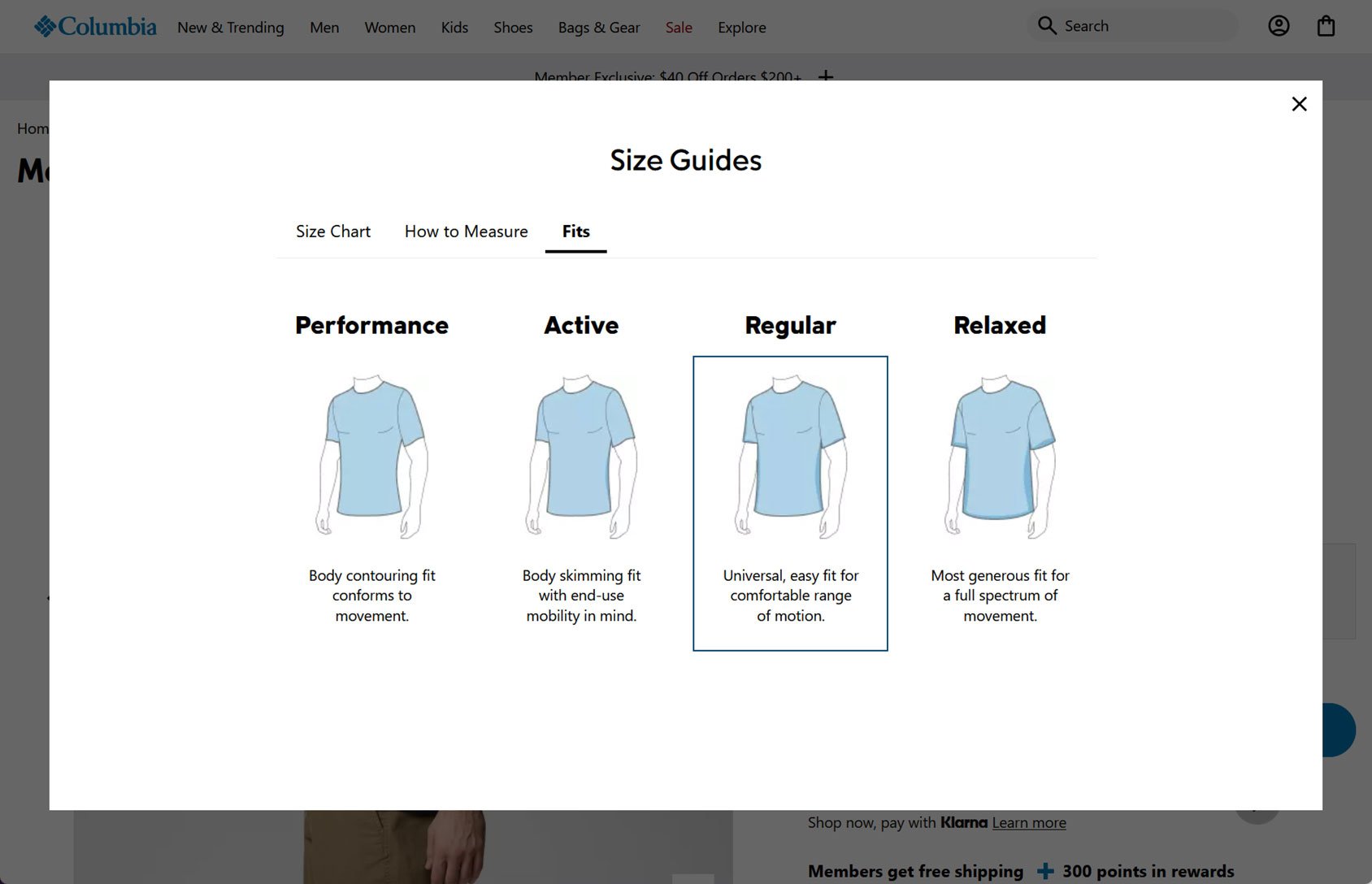
As mentioned, return rates can reach as high as 50% in some situations, making product returns a big problem for eCommerce store owners. This is especially true if you’re selling clothing or footwear, with apparel having some of the highest return rates recorded.
Multiple elements must be considered when trying to reduce your Shopify store return rate and better understand the cost of eCommerce product returns.
Lost Revenue
Sometimes you’ll receive returned items that are damaged or have been worn.
It’s not uncommon for products to be out of season or have lost popularity by the time they’re returned.
This means you won’t be able to sell the item, or you’ll have to significantly discount it to generate a sale. The end result is losing out on potential revenue.
Processing, Inventory, and Staffing Costs
Even if the product is returned in perfect condition, the processing, packaging, and shipping costs need to be considered.
After a sale, you might even order more stock, only to discover it’s not needed as products are returned.
As your eCommerce store’s return rate increases, hiring more staff to take ownership of the related tasks might be necessary. If you’re unable to hire additional staff, the time taken to process returns could prevent existing staff from carrying out their core duties, negatively impacting your store.
These costs can all add up, and depending on the condition of the item being returned, the financial burden of processing a return can range from 20% to 65% of the item’s original value.
Customer Dissatisfaction
Returns aren’t fun for customers, either.
In one survey, 66% of shoppers said they dislike having to return items.
No matter how easy your returns process is, customers still resent the hassle. This is especially true when they’ve bought the item in good faith rather than through bracketing (buying the same item in multiple sizes with the intention of returning some products).
Then there’s the frustration customers feel after being left without an outfit when a special-occasion purchase doesn’t fit and has to be returned.
So, if you can reduce the occurrence of size-related return rates at your eCommerce store, it will positively impact customer satisfaction. This, in turn, increases repeat visits, positive reviews, and word-of-mouth referrals.
Environmental Impact
The impact of returns extends far beyond your store. The waste generated, such as packaging, transportation, and unsellable products, adds to environmental harm and shouldn’t be ignored.
While returns are an inevitable part of eCommerce, their effects on profitability, efficiency, and customer satisfaction make it crucial to minimize them whenever possible.
What Drives eCommerce Store Product Returns?

There are many reasons why customers return products bought online, but sizing is one of the main drivers.
In fact, one survey of online shoppers found that 76% of clothing returns are due to sizing or fit-related issues.
As shoppers can’t try on products sold by online stores, sizing-related issues are always going to exist.
However, that’s not the only reason for sizing-related returns. Sizing and fit inconsistencies across brands and products, as well as inaccurate or missing size information at the online store, play a significant role in high return rates.
Other reasons for product returns include the item not matching its descriptions or photos, damaged or defective products, wrong items being shipped, change of mind or buyer’s remorse, and the buyer deciding the product isn’t worth its price once it’s received.
As we can see, not all returns are due to sizing issues. However, as the majority of returns are, reducing size-related product returns at your store should be a priority.
How to Slash Sizing-Related Return Rates
Now that we know sizing issues are the primary driver of eCommerce product returns, it’s time to fix this problem.
To do so, we need a quick and easy way to add size guides to our stores so that customers can confidently choose the correct size.
Providing the correct information in an easy-to-digest format will reduce bracketing and customers ordering items that need to be returned.
How to Add Size Guides to Your Shopify Store
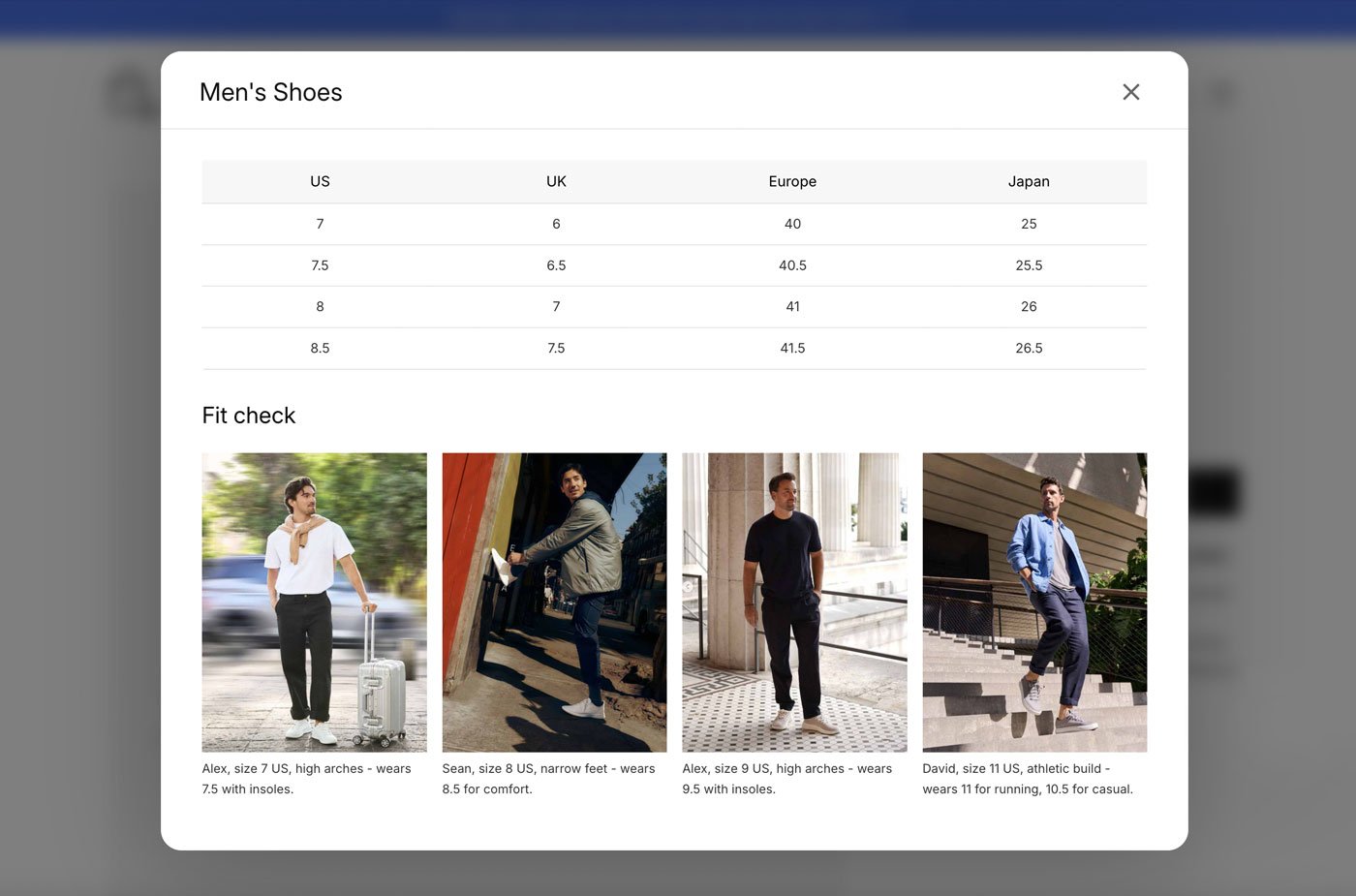
When it comes to adding size guides to your Shopify store, we recommend using a dedicated app. This ensures you can create effective size guides that contain all the information customers need, all presented in a user-friendly format.
If you try to create the size guides manually or rely on your store’s built-in functionality, you might end up with substandard results rather than outstanding size guides, which reduce return rates.
As the cost of eCommerce returns is so high, it’s essential to get your size guides right. They shouldn’t be added to your site just to check them off your to-do list.
Choosing the Right Shopify Size Guide App
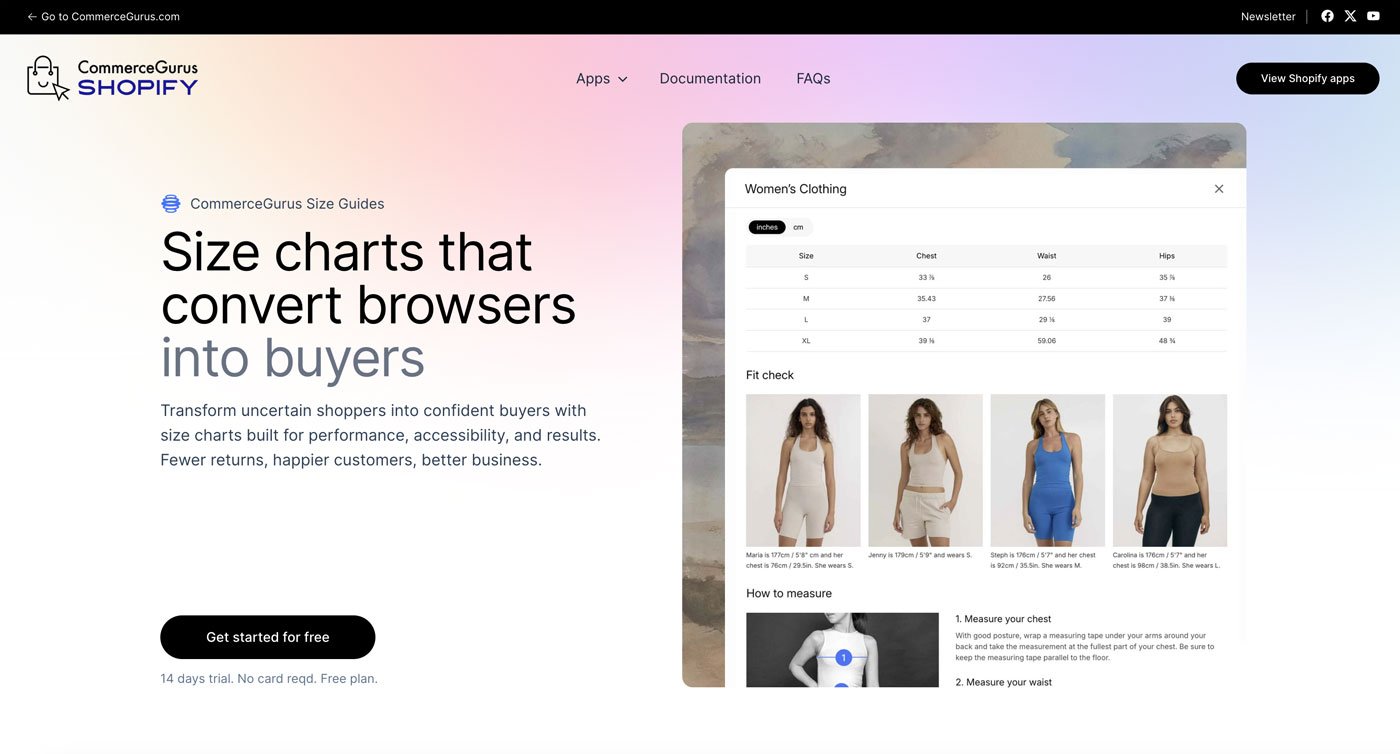
When it comes to choosing a size guide app for Shopify, we recommend our newly released product CommerceGurus Size Guides.
Available in free and paid versions, with a free trial for the premium product, this app makes it easy to create multiple stylish size guides for your store.
You can view the size guides on the app demo store, but suffice to say, they have a professional design and load quickly. The size charts created are fully accessible, following WCAG 2 Level AA guidelines.
eCommerce accessibility is particularly important if you want as many of your visitors as possible to be able to use your size guides, not to mention avoid the financial penalties handed out to stores that don’t follow the latest accessibility guidelines.
The size charts generated by the app also work perfectly on smaller screens, which is essential given that over 70% of eCommerce traffic comes from mobile devices.
One key feature of the app is that it lets you create multiple size guides and then assign them to specific products and product categories. For example, you could make one size guide for footwear and another for men’s t-shirts.
This ensures that you can tailor your guides to the products you sell and that all sizing information is relevant to the product being viewed.
If that sounds good, you can start using the app by logging in to the Shopify App Store, navigating to CommerceGurus Size Guides, and then clicking Install.
You can then use the documentation or follow the instructions in this article to create your first size guide.
Summary
As we’ve just seen, size-related issues are a significant cause of Shopify return rates.
The cost of returns to eCommerce stores is high and can impact your business in many ways, including lost revenue, higher operational costs, and a drain on your resources. Not to mention the environmental impact of processing returns.
However, by adding effective size guides to your Shopify store, you can help customers order the right items, reducing returns and customer dissatisfaction.

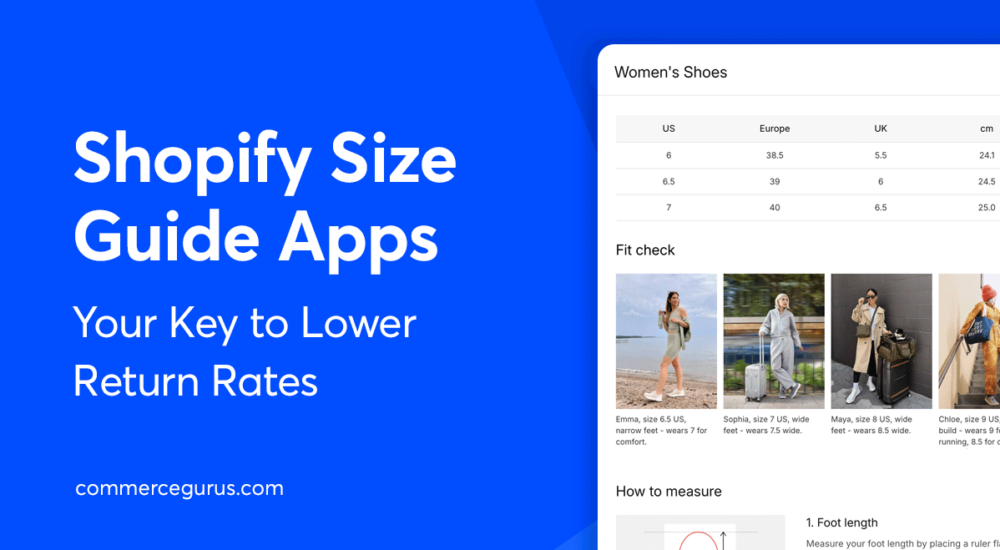




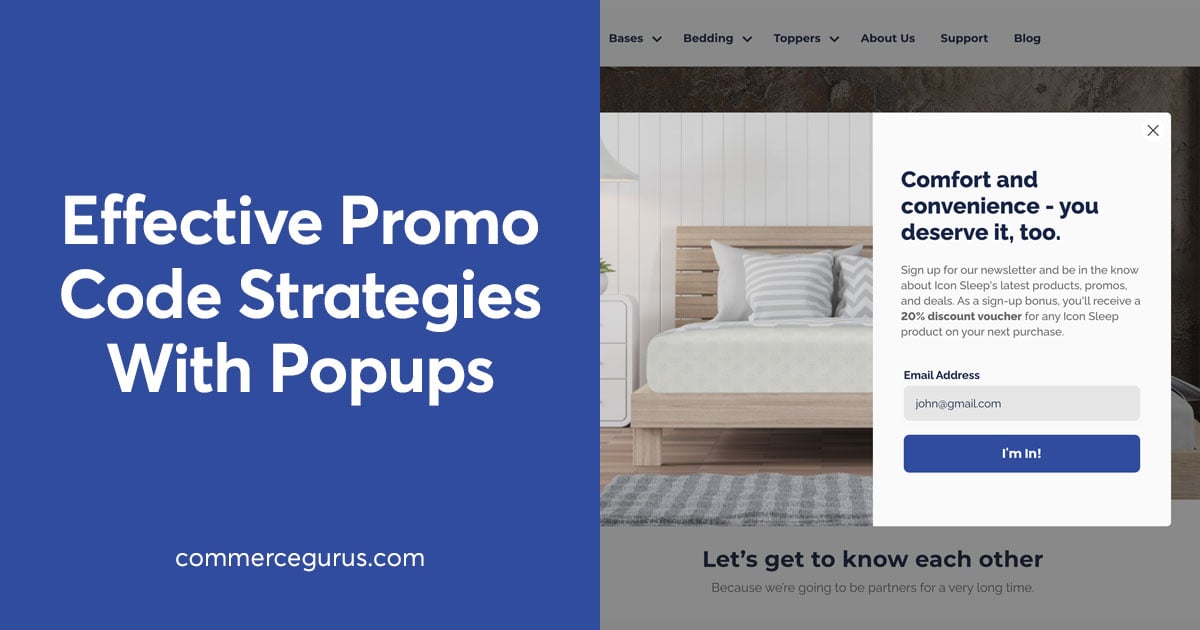
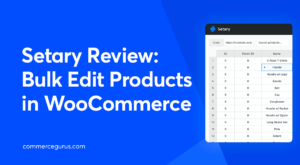 Setary Review: Bulk Edit Products in WooCommerce
Setary Review: Bulk Edit Products in WooCommerce Supercharge your shipping setup for WooCommerce
Supercharge your shipping setup for WooCommerce Problems with eCommerce design: the lack of product information
Problems with eCommerce design: the lack of product information Best Caching Plugins for WooCommerce
Best Caching Plugins for WooCommerce